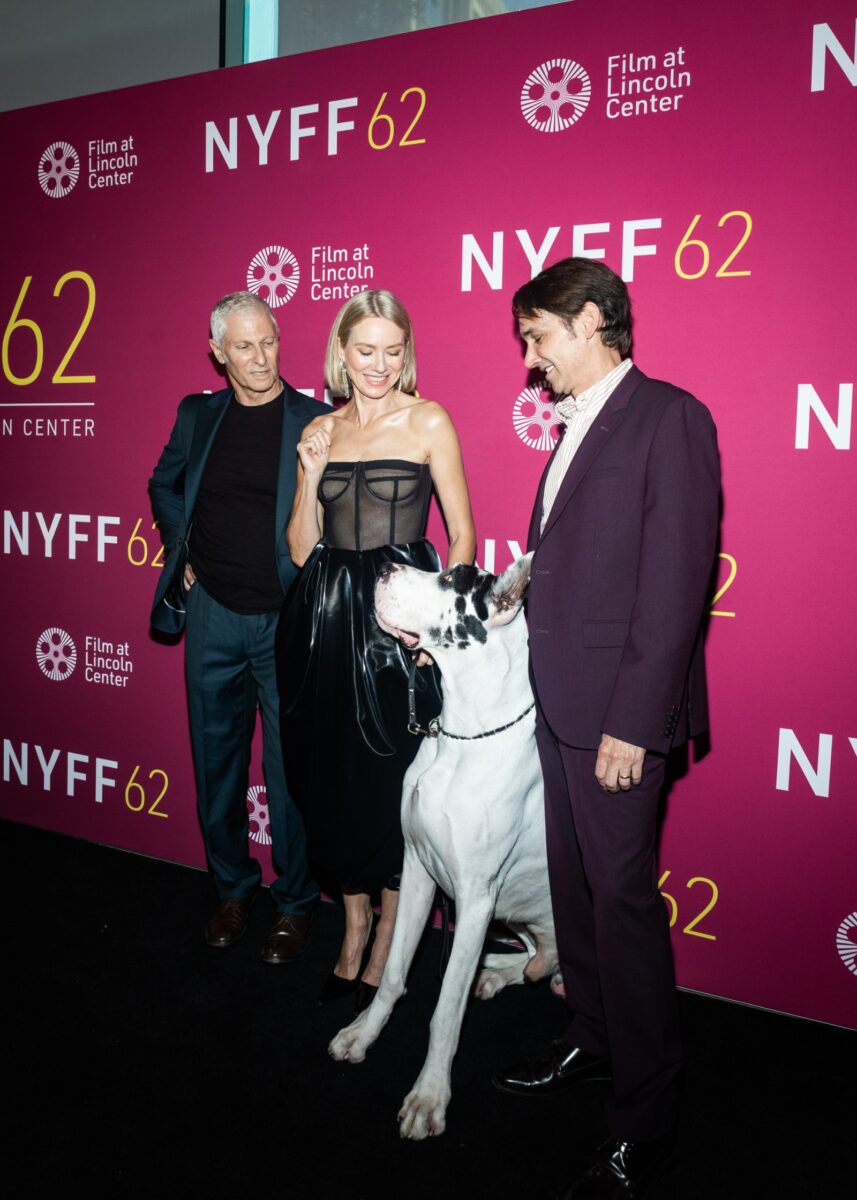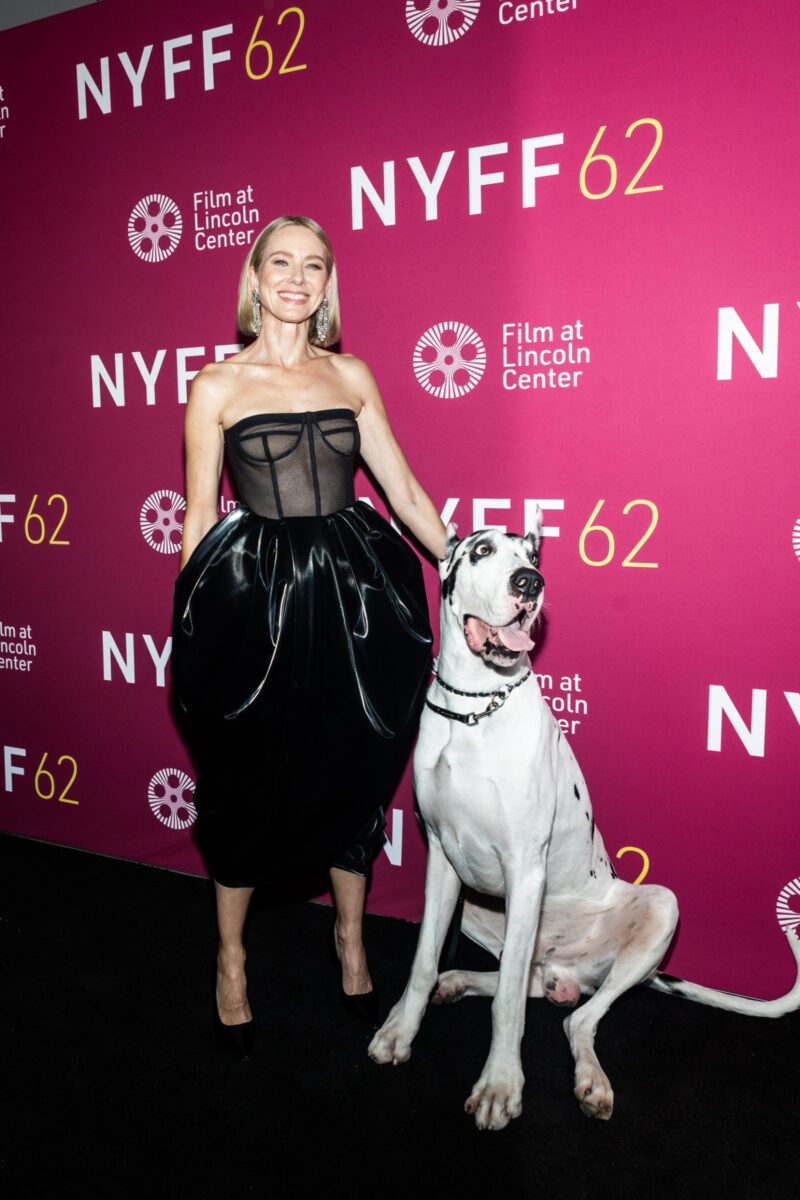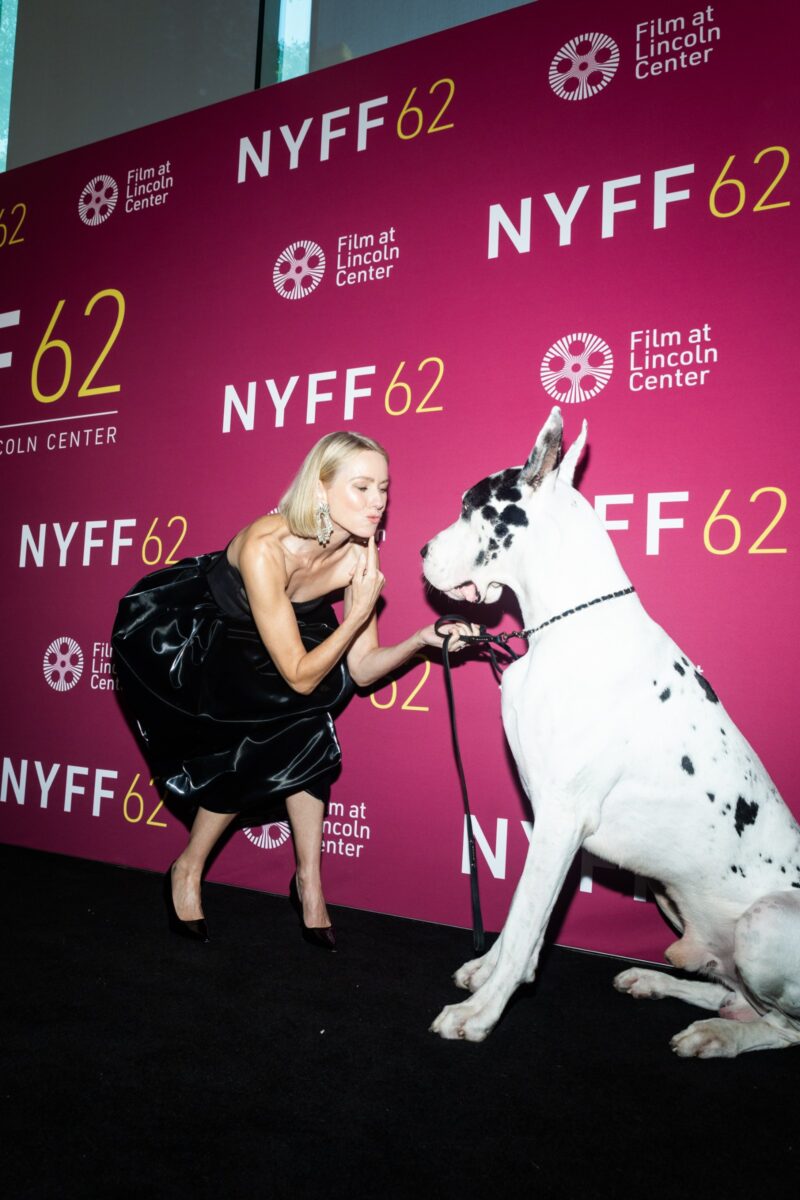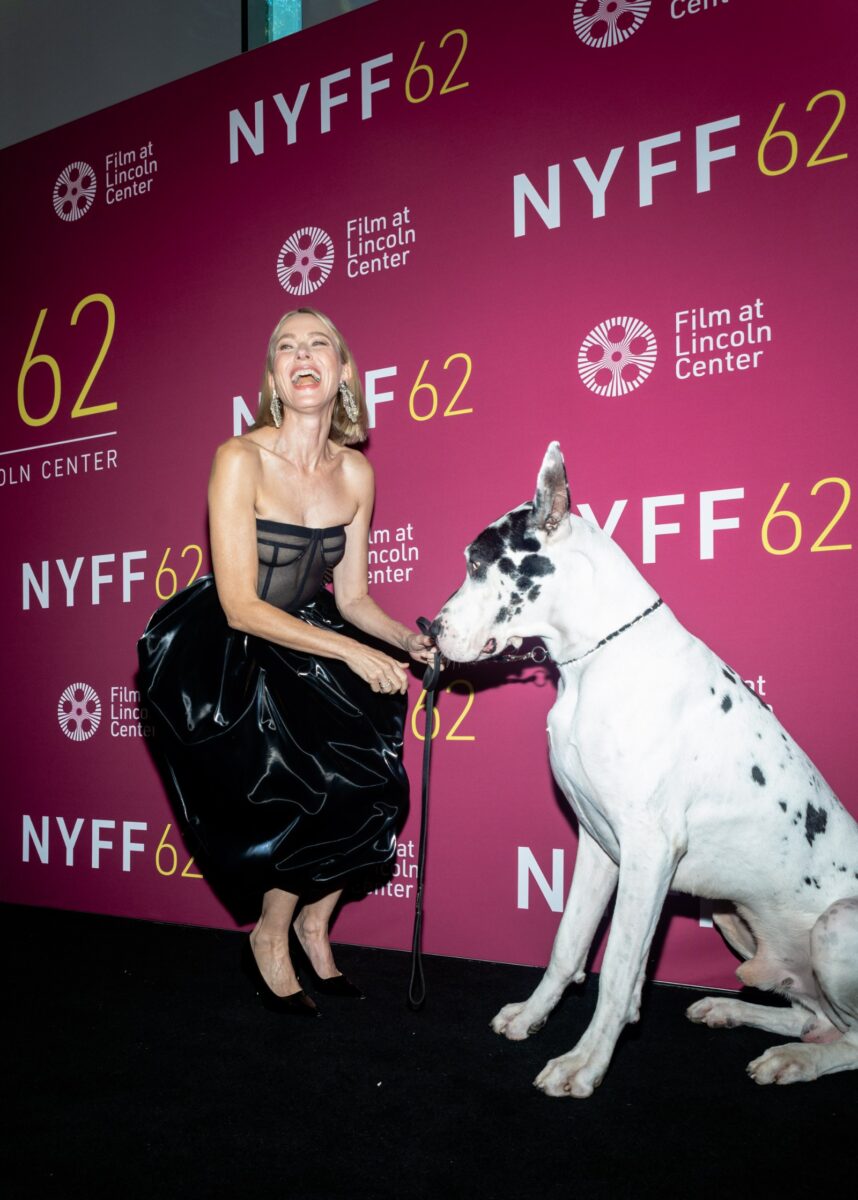Writer-director duo Scott McGehee and David Siegel have been working together for 30 years, since their debut thriller Suture in 1994. Since then, they’ve only made seven films, with their latest being The Friend, a comedy-drama adaptation of Sigrid Nunez’s award-winning novel. Starring Naomi Watts and a Great Dane named Bing, the film follows a woman grieving the suicide of her friend, mentor, and lover, spending the immediate aftermath with his dog who is now in her care. It’s a light film, deriving much of its emotional core from Bing, a dog with great big eyes to match his great big size. The film hinges on moments between Watts and her new pet, silences in which the two share a special bond of mourning.
McGehee and Siegel have been living in New York for decades. Siegel himself is from Brooklyn. The two attempt to capture the hectic nature of the city, the difficulty in a simple task like walking one’s dog. The film lacks any form of central external conflict, everything resolving into a neat bow without too much fuss. Instead, The Friend becomes a movie about the role that dogs play in human’s lives. And that’s where McGehee and Siegel excel, keeping this story small, confined to a New York City shoebox apartment (which actually isn’t as small as everyone says).
Regardless of the film’s sap, of which there is certainly a dose, The Friend succeeds because of this dynamic between a dog and their reluctant owner, and all of the depths of emotion that can exist between them. McGehee and Siegel add enough film to their list of solid features, continuing to shape careers that are defined in tandem, inextricably linked.
We sat down with McGehee and Siegel during the New York Film Festival to talk about their 30 years of filmmaking together, avoiding cliches, and existing in the stop-start nature of the independent film scene.
The Film Stage: For two people who have lived in New York for so long, how do you attempt to capture the city’s energy?
Scott McGehee: It’s something we think a lot about. Locations are really important to us, and we spend a ton of our time in prep working with the locations department, scouting ourselves. We’re both bike-riders. What you can actually capture in a film frame isn’t always the same thing that you experience when you’re out on the street. We go out and photograph the places we’re thinking about, and talk a lot about the angles and where the light’s going to be.
David Siegel: The movie is largely set around the West Village and also on the river, a little bit on the East River. How do you two-dimensionally think in terms of frames compositionally? How might the city itself come across in a way that doesn’t feel like a postcard? But also you’re asking, like, “How’s the energy or the feel of the movie?” When Iris takes the dog out on the first morning to walk him, and then that little dog yaps at him, there are two frames looking down the street in both directions on the west side of Washington Square. And then there’s nothing especially unique about the street––other than it’s Washington Square and it has that iron fence and you can see the Empire State Building deep in the background. And it just feels like something, right? That’ll feel like New York in a very simple way. The shots are only two and three seconds each, but they convey something.
Scott McGehee: Then this movie, I think even in the writing, how do we understand the rhythm of a New Yorker’s life? How do we get into the subway? How often can we do that? Will Naomi Watts be game for going to the subway? How can we get onto the water?
David Siegel: You see Walter running in the place similar to where we’re gonna actually dump his ashes. So they’re just a series of ongoing questions.
Scott McGehee: Then the Great Dane meetup is an actual thing that happens in Central Park. We love shooting in Central Park, so that was a pleasure. We talked ad nauseum with our composers about what it meant to have a New York-sounding score.
There are so many little decisions being made every day. And you two have been making films together since 1994. Why do you continue collaborating? What keeps you working together?
Scott McGehee: We like each other a lot.
David Siegel: Really enjoy talking about ideas together. It’s a lot of work and it requires a lot of concentration to make a movie, but it’s creatively really, really rich. Right? So all of that churn that we were talking about in terms of the locations… and I made a joke about how we spend too much time doing it. We spend just enough time. We spend the amount of time that it takes to actually find those locations. Even when it’s frustrating and difficult. It’s super-rewarding. This can sound like a cliché, because it sort of is, but when people say they don’t really have a job, it’s how we occupy our days. We get to occupy our days thinking about stories and how to make them, and then actually making them and that’s a gift.
Scott McGehee: I think what makes our collaboration work is most times when we find the thing that’s right, we both know it’s right. We don’t have an argument about whether it’s right or not. It clicks for both of us; that’s when we know.
Photos by Mettie Ostrowski. Courtesy of the 62nd New York Film Festival.
You’ve made movies in all sorts of genres, with mostly thrillers and intense dramas, but The Friend is much lighter. How did you find working on something with a more comedic tone, even if the subject matter still can be heavy?
David Siegel: We were drawn to the humor in the book right from the get-go. Sigrid is a funny person and she’s a funny writer. We’ve really gotten to know her really well.
Scott McGehee: It’s dealing with grief and loss but she does it with this light touch that keeps reminding you of how life actually works. Funny things are happening, even when you’re feeling awful. Having that balance in her work really helped us.
David Siegel: I don’t know if you’ve heard but Bill Murray…
Scott McGehee: He did ask for our whole script, like front-to-back. The first conversation we had with him was going through the script––every line of the script, whether he’s on the scene or not––and giving little comedy suggestions.
David Siegel: Most precise notes we’ve ever been given.
With this material, and this specific film, how do you not veer too far into the saccharine and the cliché?
David Siegel: There’s no way, other than super-trying to be as sensitive to it. The very thing that you’re asking about was something we really thought about. If the movie tips into that––and maybe some people feel that we do––but it was very, very important to us not to do that. If the score lifted even a little bit too much in a particular scene, that scene started feeling like a bit too much.
Scott McGehee: It was a lot of vigilance, a lot of conversation that went into that very thing. I think working with the dog’s material, like: “When is it too cute? When is that going too far?” It was always a conversation.
What about your use of voiceover? How do you decide how much of that to use? It’s usually pretty divisive for critics and audiences; people either love it or hate it.
David Siegel: The book is full of digressions. They’re about the literary world, about suicide, about other things that are in the book that aren’t in our in the script. And in those digressions you really hear Sigrid’s voice as a writer and Iris’s. It was the right thing to do because she’s having a kind-of-long conversation in her head with Walter. There are no names in the book, but the character of Walter and the way she talks to him about their life together without actually narrating the story seemed to us like an interesting thing to do with the voiceovers. It was a reflection on her part.
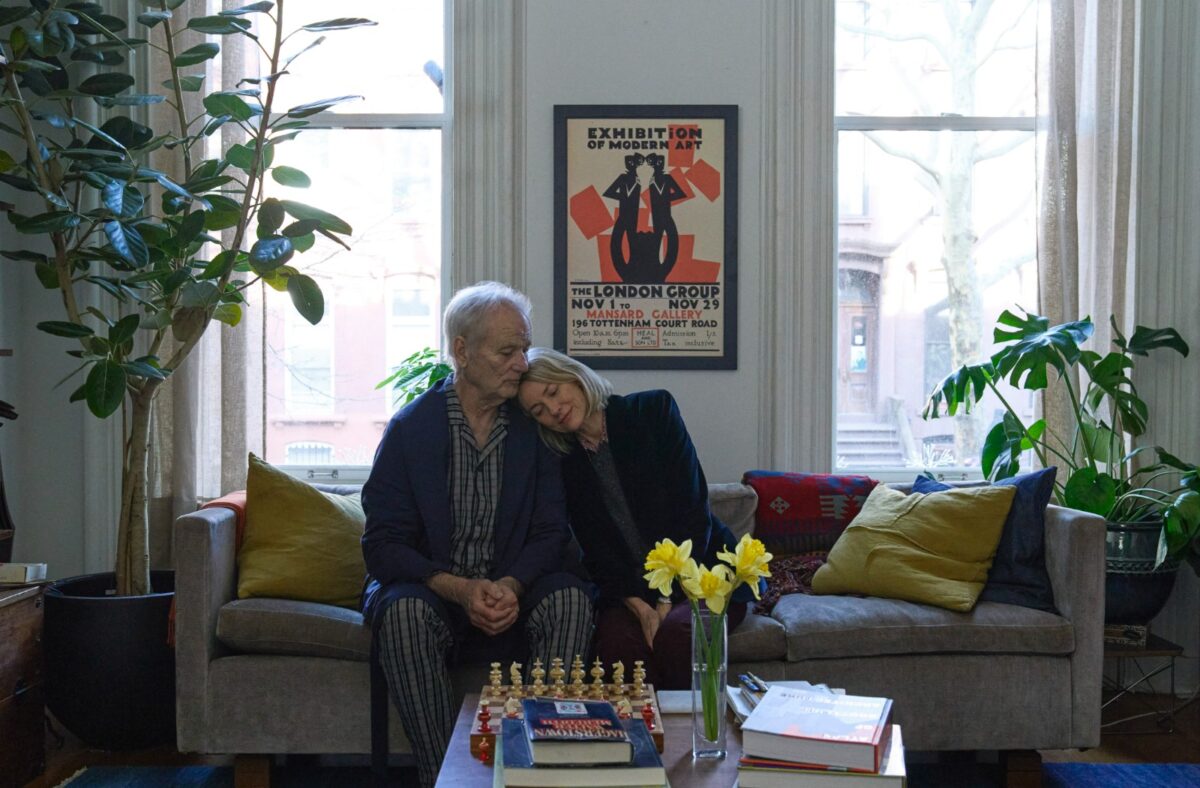
There are so many moments with Naomi and the dog, sitting in silence, just looking at each other. How did you find time for those within the span of the film?
Scott McGehee: That was always the plan. I think our search for the dog, one of the things that animated it was, like, finding a dog that you could just look at. The dog’s not really acting. It’s just his face that has to tell you the story you want to be told. Context does a lot for you, but a lot of it’s just built into his face. For some reason, recently, we were looking at some of the other dogs that we interviewed before finding Bing. They were great dogs with great people and families, but we can’t imagine working with any of them. They weren’t the right dog and didn’t deliver the pathos you feel looking at Bing.
David Siegel: Right when we met him. We flew all over the place, looking at dogs, auditioning dogs. But when we met Bing, we stopped looking.
It’s a somewhat famous book now, though. I have several friends who have read it and loved it. It was on the New York Times‘ list of the top 100 books of the 21st century. Was making the book readers happy something that stuck in your minds?
Scott McGehee: That’s a tough one. It truly is. And I think there are books that you would just stay away from because they present such a vivid world. We felt less of that intimidation, maybe because the book is so cerebral. There was so much space in it to materialize something that felt different from the book.
David Siegel: When we optioned the book, it was a tiny little book. Sigrid was a really loved writer but had never had anything adapted. The book winning the National Book Award, that year, I think no one was more surprised than Sigrid. It’s a beautiful book. I highly recommend reading it. But it’s not an obvious adaptation.
Scott McGehee: It’s not one of those books that you feel like, “Oh, if we leave out this plot point from the book, or this character from the book, everyone’s going to be mad.” It’s a much more open-ended narrative.
David Siegel: Long before we ever finished the adaptation, we knew Sigrid really well. When we first started talking to her, she’s like, “Hey, if you decide to do this, go with God. I don’t know anything about screenwriting and I don’t want to know anything about screenwriting.” So when we were done with the adaptation and we sent it to her it’s like, well––”What’s she gonna think?” I think we’re more anxious about her opinion than her fans’ opinions. She really liked the script. She came to Telluride with us, and that’s where she saw the movie for the first time. So that was really great. And she’s still our friend.
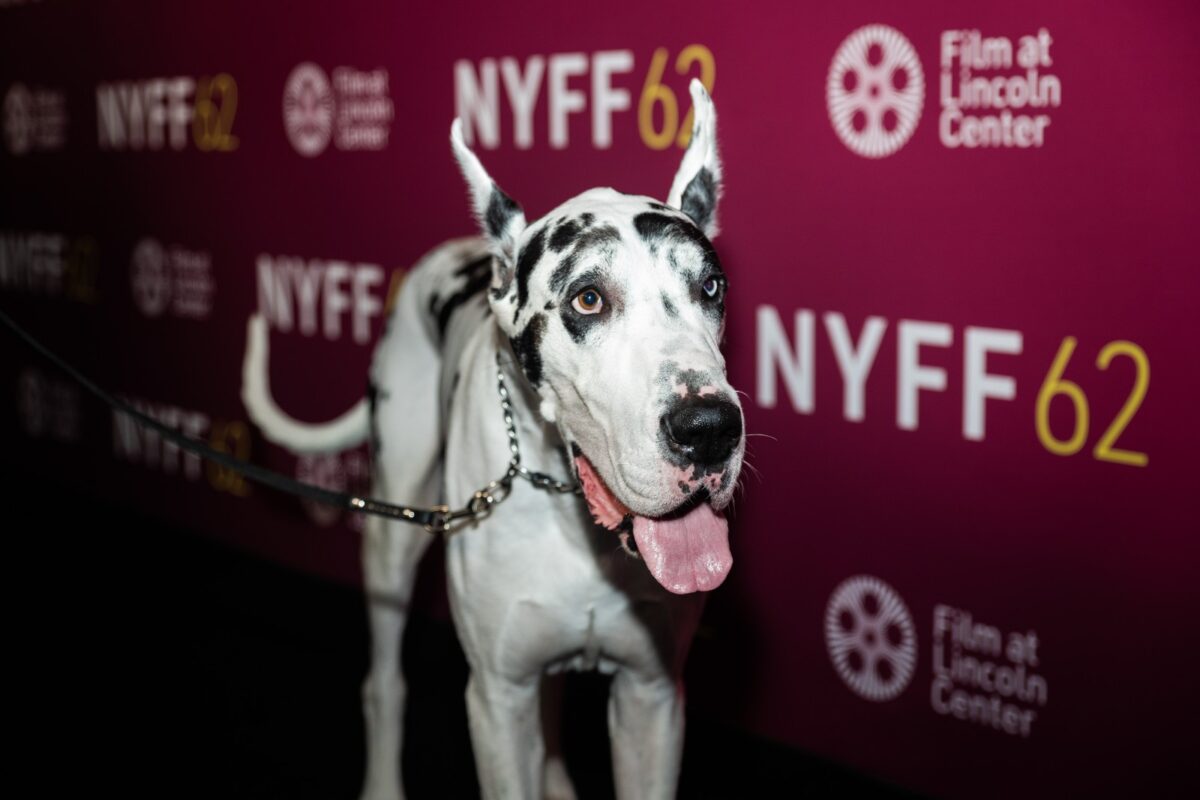
Photo by Mettie Ostrowski. Courtesy of the 62nd New York Film Festival.
You say that you optioned this book after it came out around 2018, so it’s been 6-7 years. How do you stay connected to a project over a half-decade later?
David Siegel: I’m glad you’re asking it because this particular project fills so much space in terms of literal, chronological time, but also space in terms of the way we felt about the gaps between things. Because we started working on the script in 2018. As we said, in the fall of 2018 another project emerged, written by a friend of ours, that we were going to direct. There was money. There was a whole plan for it. We went and scouted Italy, England, and London for it. But it took 10 months to basically not happen, like so many other projects we’ve worked on in the past––where it’s just this close to happening and then it doesn’t.
So then we got back to The Friend and started writing it, and finished the script quite quickly. Started getting a lot of interest from talent, started interviewing dogs, and then the pandemic hit and so it had to be put down again. Then the pandemic became, as we all know, so bad. We actually went off and made another movie, Montana Story, during the pandemic, and then we came back. We’re really trying hard now to have no more gaps. We’ve made now two movies in four years, and we’re hoping to keep things moving like that.
When these projects stop and start multiple times over the course of several years, how do you continue to capture and recapture those initial feelings you had?
Scott McGehee: When you’re making a movie, you have to get back to those feelings so frequently. That’s one of the big challenges. You get so overexposed to the feelings of the film; staying in touch with those is one of the big challenges of the job. What was that starting place? I don’t know that the years of not making it are as hard on that process as the months of actually making it. When you’re everyday living it, it’s always a challenge to stay in touch with the emotional touchstones of your process.
David Siegel: This one was big because we fell so hard for the book and the story and everything around it. The dog, Sigrid. A lot of people thought, because there were so many interruptions, that the movie wasn’t going to happen. But we were pretty determined with this. It was a determination born of love because we really did fall hard in love with the whole thing.
The Friend screened at the 62nd New York Film Festival and is seeking distribution.

